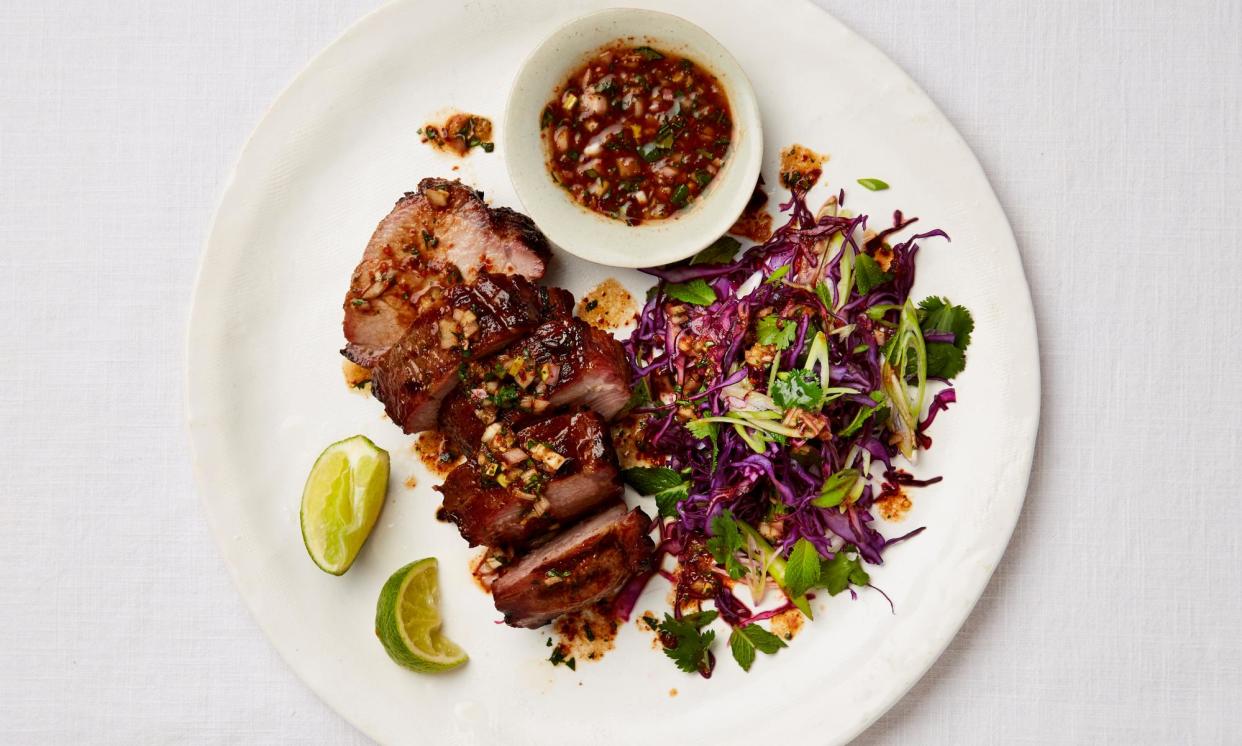Are there any salad dressings that don’t rely on oil?

It’s hard to deny the transformative power of a good salad dressing, but you don’t necessarily need much oil, if any at all. Honey, for example, will give “a natural stickiness that helps adhesion to your salad, while the sweetness balances the acidity of vinegar,” says Tony Rodd, head chef at Pomus in Margate. He leans towards the heather variety, whisking it with balsamic vinegar and wholegrain mustard – this is magic when tossed with blanched greens, grilled peaches, and torn burrata. “You could always add toasted nuts and seeds for texture,” he advises.
Chris Shaw, head chef at Toklas in London, meanwhile, would think about yoghurt, garlic, and some form of acid, whether that’s vinegar or lemon juice. “You can achieve the same consistency as a caesar dressing, but with the sourness of yoghurt, which I prefer,” he says, and although he’d normally then loosen it with a little olive oil, you could use a splash of water instead. Toss with robust leaves (think gems), or into coleslaws, potato salads, chopped salads … you have options. If, however, you want the creaminess but without the dairy, go with nuts. “We use blanched almonds, pine nuts, and hazelnuts in the restaurant,” says Shaw, which are gently cooked in water then blended with more water, vinegar (something white), and garlic. You’ll be left with a nut cream, which is crying out for shaved, raw cauliflower, beetroot, potatoes, or sturdier salad leaves (radicchio, say). Nuts would also be Elaine Goad’s tactic. The head chef at Nopi in London favours toasted cashews, which she blends with water, tahini, lime juice, garlic, maybe miso for an umami hit. “If you prefer a bit of texture, don’t blitz it up too much; if you want it lighter, add more lime juice.”
Another Goad favourite, though, is something resembling a Thai papaya salad dressing. “Muddle tomatoes, add a bit of palm sugar, lime juice, chilli (for heat), fish sauce (or soy, if you’re vegetarian), and some fresh coriander or parsley.” It would be wise to bookmark this for slaw, although another winner with the crunchy stuff – and especially if hispi cabbage and kohlrabi are involved – is a combination of rice-wine vinegar, maple syrup, lime juice, and sesame oil. “You don’t need that much sesame oil because a little really does go a long way,” adds Goad.
Finally, Rodd would keep ponzu on heavy rotation. “It does take a little work to make, but it will then keep in the fridge for a month,” he says, plus it’s versatile; use it as a glaze for barbecues as well as dressing salads. “Take the zest and juice of lemons, limes, oranges, grapefruit, and yuzu (if you can find it), add soy sauce or tamari, then throw in dried seaweed (kombu is best), and some dried mushrooms (ideally shiitake and porcini).” Bring to a boil, simmer for 20 minutes, and leave overnight. “The next day, strain, pour the liquid into a clean pan, add mirin, sake, and sugar, then reduce slightly to create a sticky, glossy dressing.” While tuna tartare or ceviche are obvious co-habitants, Rodd also recommends tossing it with citrus, samphire, seaweed and beans for a salad that’s dressed to impress.
• Discover salad recipes from your favourite cooks in the new Guardian Feast app, with smart features to make everyday cooking easier and more fun


